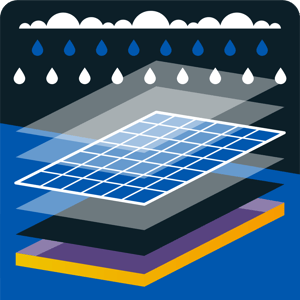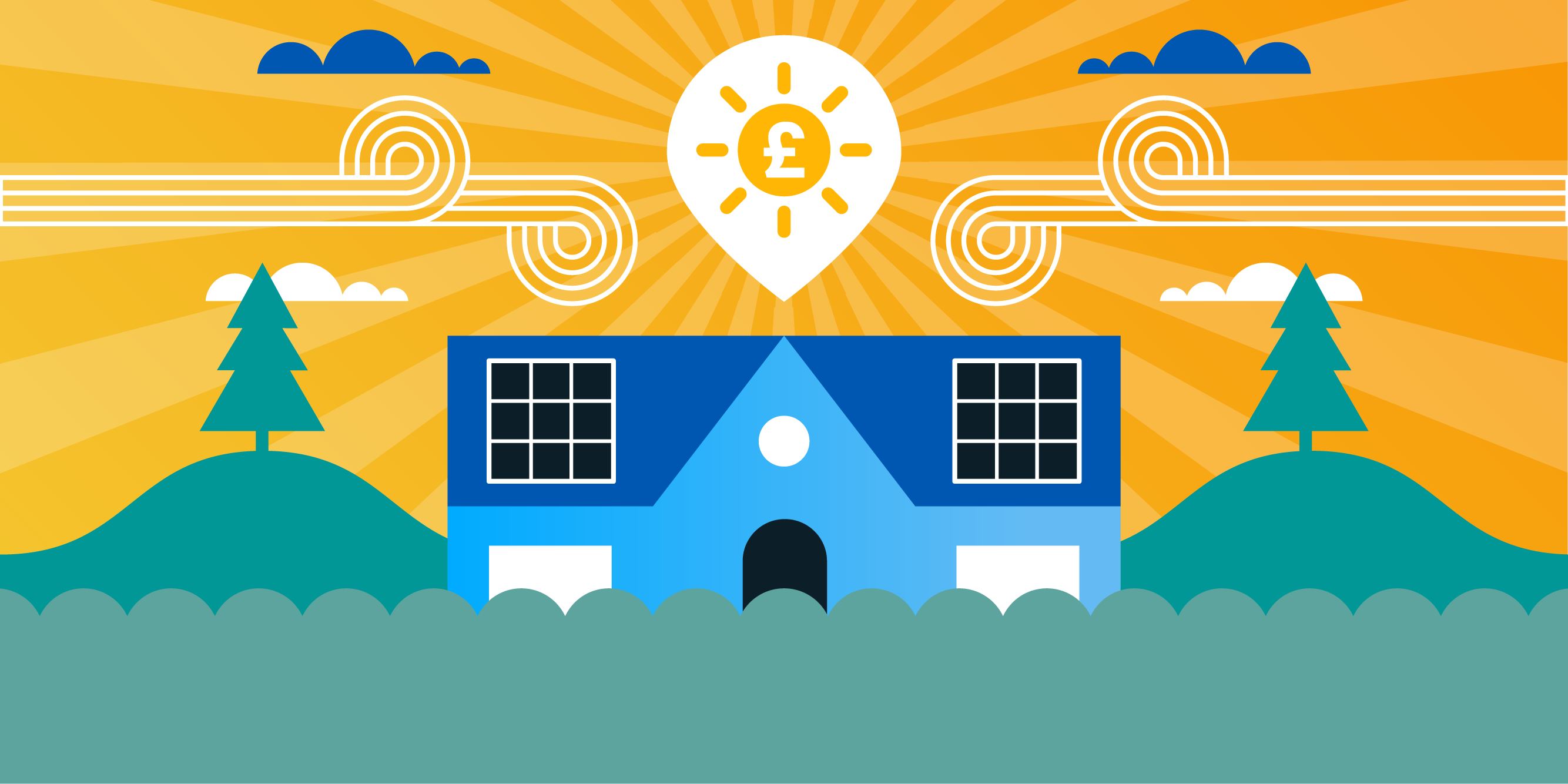The Economics of Solar
Having solar installed is a big step. Or is it? It’s probably cheaper and easier than you think, and with current energy prices, the payback period is likely to be shorter than you were expecting.
Solar was already a great option for households looking to reduce their carbon emissions - a typical installation cuts emissions from energy use by about 1.6 tonnes PER YEAR. Every year. It’s a large and sustained impact. In this blog though, Steve, who heads up our product team, takes you through how to weigh up the financial benefits of solar so you can make a decision whether the cost of an installation makes sense for you.
*Exclusive Solar Offer* Buy One, Get One FREE!
Yes, really! Buy one solar panel, get one absolutely FREE with our latest game-changing deal in partnership with Utilita Home – plus all these benefits:
✔ Solar installed from 4 weeks
✔ Save up to £1,225* a year on energy bills
✔ No upfront cost with a monthly solar panel subscription
✔ Generate your own clean energy & start saving instantly
✔ Protect yourself from rising energy prices
The Financial Benefits of Solar
With a solar array on your roof, you generate your own power! The portion of the solar you generate and use is called your self-consumption. Every unit of electricity you self-consume saves you buying that unit from the grid. This saves you around 27.03p per unit based on current prices. The higher your self-consumption, the larger your savings.

Any energy you can’t use yourself is exported to the grid. As a solar household, your utility will pay you for exported electricity under the Smart Export Guarantee. This is at a lower rate, anything between 3p and 16p depending on your supplier. So, stating the obvious, it’s much better to use as much of your solar power as possible rather than export it to the grid.
How Does It Add Up?
It’s always easier to do this with an example! Suppose your array will generate 4,000kWh a year and you’ll self-consume 50% of this. Then you’ll reduce your grid use by 2,000kWh which saves you £540 with electricity at 27.03p/kWh. You’ll sell the other 2,000kWh to the grid which gets you £300 at 15p/kWh. So you’re a grand total of £840 per year better off. It’s not a bad start.
| Usage | 4,000 |
| Self-consumption | 50% |
| Reduction in grid use (kWh) | 2,000 |
| Exported to grid (kWh) | 2,000 |
| Grid import price | £0.2703 |
| Grid export price | £0.15 |
| First Year Savings | £840 |
But that’s just in the first year. What happens after that?
Well… panels are typically warranted for 25 years so we’ll look over that time horizon. There are two things to consider: how will electricity prices change and how will the panels perform. The bad news is that electricity prices are likely to rise. We’re assuming that they rise by 2% per year. The good news is that your solar array will continue to perform well over 25 years. We’ve put in a conservative estimate that the installation produces 1% less power each year as it gets older.
Sticking with the same assumptions as before and adding up the savings, we get to a saving of over £23,741 over 25 year. To see the impact of different assumptions, you can download a copy of the solar economics calculator here and have a look for yourself.
| Usage (kWh) | 4,000 |
| Self-consumption | 50% |
| Reduction in grid use (kWh) | 2,000 |
| Exported to grid (kWh) | 2,000 |
| Grid import price | £0.2703 |
| Grid export price | £0.15 |
| First Year Savings | £840 |
| Power price inflation | 2% |
| Length of installation (Years) | 25 |
| Degradation rate | 1% |
| Total savings | £23,741 |
How Can I Increase My Savings?
The best way to increase your savings is to increase your self-consumption. In our example, self-consumption increasing from 50% to 60% leads to overall savings increasing to over £25,100. Another move in the right direction.
| Usage (kWh) | 4,000 |
| Self-consumption | 60% |
| Reduction in grid use (kWh) | 2,400 |
| Exported to grid (kWh) | 1,600 |
| Grid import price | £0.2703 |
| Grid export price | £0.15 |
| First Year Savings | £889 |
| Power price inflation | 2% |
| Length of installation (Years) | 25 |
| Degradation rate | 1% |
| Total savings | £25,100 |
But how can you increase self-consumption? Well, if you could move your large appliances such as washing machine and tumble dryer to run in the middle of the day then your self-consumption will increase.
Perhaps your next car will be electric? Charging an electric car whilst your array generates can lead to a big jump in self-consumption. There are EV chargers specifically designed to enable you to do this.

Finally, one of the most effective ways to increase self-consumption is adding a home battery… but this does come with a price, starting at around £3000 for a small battery. Are they worth it? We’ve seen homes increase their self-consumption from 30% to 70% with a relatively small battery so they can have an impact. To take full advantage of a battery, we’d recommend moving to a tariff with cheaper overnight power. You can then charge the battery up on cheap overnight power and use this to cover your morning peak. This is particularly effective in the winter when the sun rises later so you can use your battery to cover those early hours.
What If I Move House?
Although your panels will be working in 25 years time, you may have moved house and someone else could be enjoying the benefits of the panels you installed. How can you factor this into your thinking?
A good way to start is to think how long you’re likely to stay in the house and see how much you’d save during that period. Continuing the initial example, over the first 7 years the homeowner would save over £6,064. That could already pay off the full cost of a £5,000-£7,000 installation.
| Usage (kWh) | 4,000 |
| Self-consumption | 50% |
| Reduction in grid use (kWh) | 2,000 |
| Exported to grid (kWh) | 2,000 |
| Grid import price | £0.2703 |
| Grid export price | £0.15 |
| First Year Savings | £840 |
| Power price inflation | 2% |
| Length of installation (Years) | 7 |
| Degradation rate | 1% |
| Total savings | £6,064 |
The missing piece is how much does it increase the value of your house? Sadly there’s no clear answer to this. If you search the internet you’ll find wildly different estimates. Our data science team pointed us to a recent episode of Radio 4’s More or Less where they debunked a paper linking door colour to house prices. Door colour and solar installations are very different, but the challenge of pinning a price difference to one change is the same. There are just too many differences between houses.
We recommend putting yourself in the shoes of the buyer. How much more would you pay for a home with a solar array saving you nearly £800 a year? If that’s enough to cover the remainder of the bill when you move then you’re in business!
Costs of Maintenance
The great thing about solar panels is they just work. In the UK you won’t typically need to have your panels cleaned as the rain will do that for you.

The major cost will likely be replacing the inverter between 10 and 15 years after installation. The inverter is responsible for converting the electricity generated by the panels into grid frequency current. The inverter is typically installed in an accessible location and replacing it is a quick job. The cost is somewhere between £600 and £1000 including labour today and we’d expect it to be lower by the time you need to make the change.
So in Summary…
Solar was always a good option for anyone looking to lower their household emissions. Rising energy costs mean it now makes financial sense for many households too, particularly if you can maximise your self-consumption and make smart use of a home battery.
Find out just how much difference solar could make to your bills with the Loop Solar Simulator - a unique tool that lets you test before you invest.
About The Author
Steve Buckley is in charge of product direction at Loop and has been with Loop since it was founded. He has a background in statistics and data science and has worked at multiple successful startups.
• • •
How does 2 for 1 solar panels sound? That means you could install 12 panels for the price of 6! Secure our exclusive solar offer with Utilita Home.









